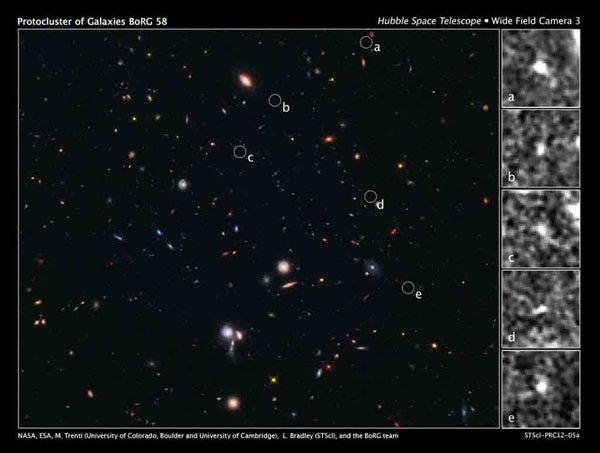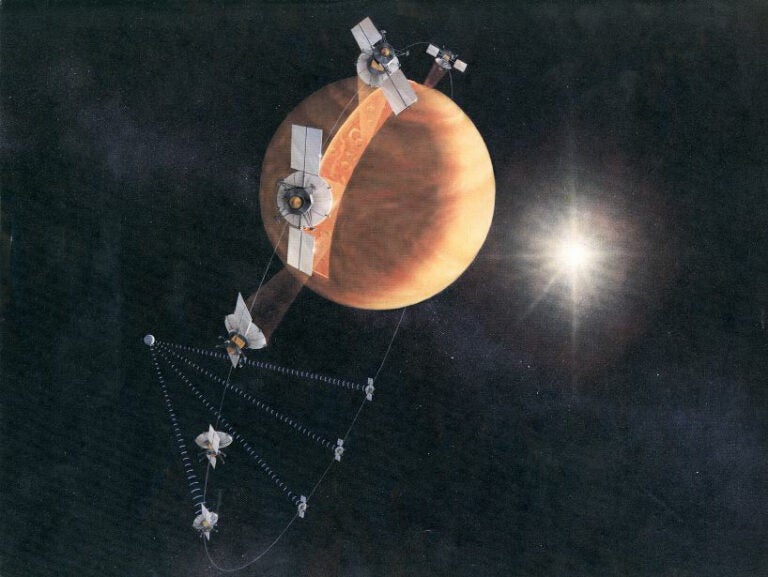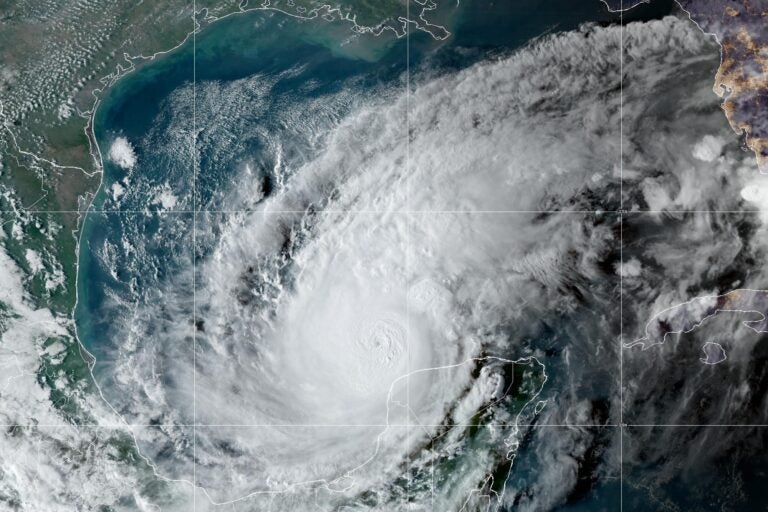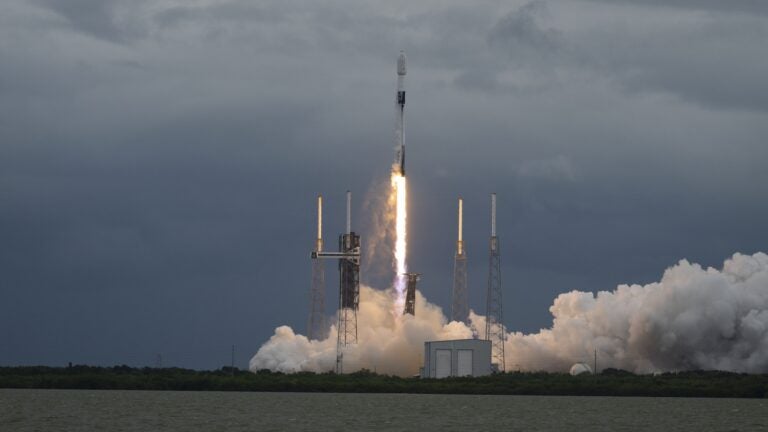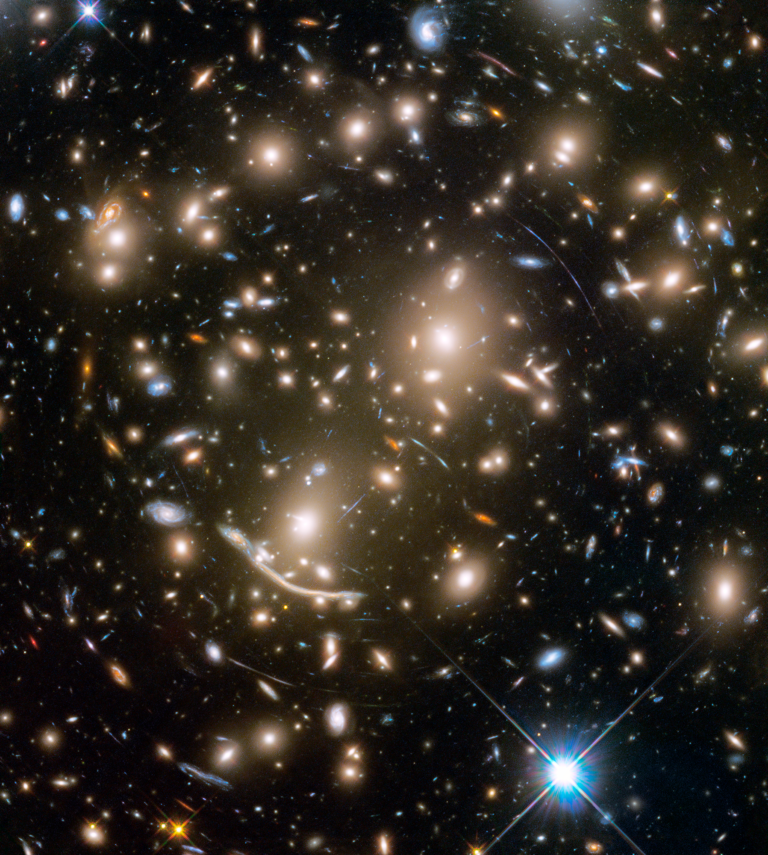In a random sky survey made in near-infrared light, Hubble found five tiny galaxies clustered together 13.1 billion light-years away. They are among the brightest galaxies at that epoch and very young — existing just 600 million years after the Big Bang.
Galaxy clusters are the largest structures in the universe, comprising hundreds to thousands of galaxies bound together by gravity. The developing cluster, or protocluster, is seen as it looked 13 billion years ago. Presumably, it has grown into one of today’s massive “galactic cities,” comparable to the nearby Virgo cluster of more than 2,000 galaxies.
“These galaxies formed during the earliest stages of galaxy assembly, when galaxies had just started to cluster together,” said Michele Trenti from the University of Colorado at Boulder and the Institute of Astronomy at the University of Cambridge in the United Kingdom. “The result confirms our theoretical understanding of the buildup of galaxy clusters. And Hubble is just powerful enough to find the first examples of them at this distance.”
Most galaxies in the universe reside in groups and clusters, and astronomers have probed many mature “galactic cities” in detail as far as 11 billion light-years away. Finding clusters in the early phases of construction has been challenging because they are rare, dim, and widely scattered across the sky.
“We need to look in many different areas because the odds of finding something this rare are very small,” said Trenti, who used Hubble’s sharp-eyed Wide Field Camera 3 (WFC3) to pinpoint the cluster galaxies. “The search is hit and miss. Typically, a region has nothing, but if we hit the right spot, we can find multiple galaxies.”
Hubble’s observations demonstrate the progressive buildup of galaxies. They also provide further support for the hierarchical model of galaxy assembly in which small objects accrete mass, or merge, to form bigger objects over a smooth and steady but dramatic process of collision.
Because the distant, fledgling clusters are so dim, the team hunted for the systems’ brightest galaxies. These galaxies act as billboards, advertising cluster construction zones. From computer simulations, the astronomers expect galaxies at early epochs to be clustered together. Because brightness correlates with mass, the most luminous galaxies pinpoint the location of developing clusters. These powerful light beacons live in deep wells of dark matter, an invisible form of matter that makes up the underlying gravitational scaffolding for construction. The team expects many fainter galaxies that were not seen in these observations to inhabit the same neighborhood.
The five bright galaxies spotted by Hubble are about one-half to one-tenth the size of our Milky Way, yet are comparable in brightness. The galaxies are bright and massive because they are being fed large amounts of gas through mergers with other galaxies. The team’s simulations show that the galaxies eventually will merge and form the brightest central galaxy in the cluster, a giant elliptical similar to the Virgo cluster’s M87.
These observations demonstrate the progressive buildup of galaxies. They also provide further support for the hierarchical model of galaxy assembly in which small objects accrete mass, or merge, to form bigger objects over a smooth and steady but dramatic process of collision and collection.
The observations are part of the Brightest of Reionizing Galaxies survey, which uses Hubble’s WFC3 to search for the brightest galaxies around 13 billion years ago when light from the first stars burned off a fog of cold hydrogen in a process called reionization.
The team estimated the distance to the newly found galaxies based on their colors, but the astronomers plan to follow up with spectroscopic observations, which measure the expansion of space. Those observations will help astronomers precisely calculate the cluster’s distance and also yield the velocities of the galaxies, which will show whether they are gravitationally bound to each other.

